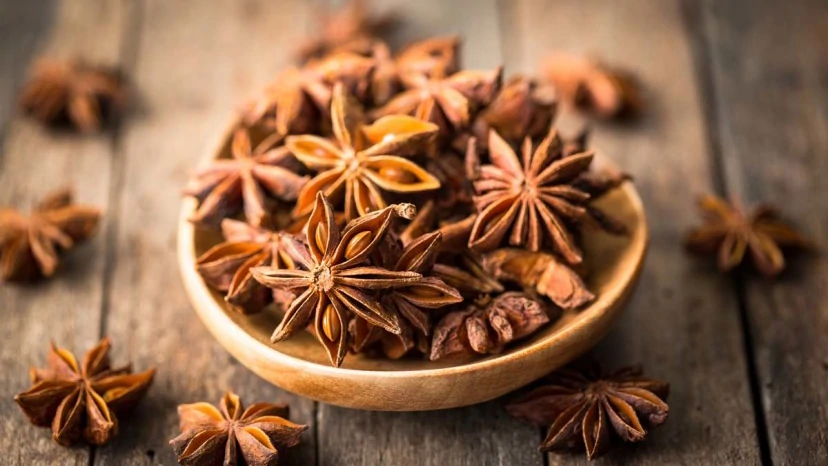What Is Star Anise? Health Benefits and Culinary Uses of Star Anise
When sipping from a steaming bowl of Vietnamese pho, you’ll find a delicate broth that possesses a wonderfully aromatic flavor profile comparable to licorice or fennel. Star anise is the most likely culprit for that flavor. A secret ingredient in traditional Asian dishes, this warming, sweet spice can be simmered in broths and braises to add extra depth of flavor.

What Is Star Anise?
When sipping from a steaming bowl of Vietnamese pho, you’ll find a delicate broth that possesses a wonderfully aromatic flavor profile comparable to licorice or fennel. Star anise is the most likely culprit for that flavor. A secret ingredient in traditional Asian dishes, this warming, sweet spice can be simmered in broths and braises to add extra depth of flavor.
What Does Star Anise Look and Taste Like?
Star anise is a distinctive looking spice that resembles a small rust-colored star. It usually has between 6 to 8 points, each point containing a small seed that is the flavor epicenter. The spice gives a sweet, licorice-y flavor to dishes similar to clove and aniseed.
How to Buy and Store Star Anise
The best place to buy high-quality star anise is from Asian markets, although you can find it in some general supermarkets.
-
For the strongest flavor, look for whole stars with unbroken points.
-
To check the freshness, break off a point, crush the seed and smell it. You should smell the aroma right away, if it’s faded it may be stale.
-
Store in an airtight container in a dark, cool place. Whole star anise remains fresh for about one year, whereas the ground spice will begin losing its flavor after six months.
Culinary Uses of Star Anise
Star anise is used similarly to bay leaves in Vietnamese and Chinese cuisine. When used whole, star anise pods are simmered in soups, stews, and braises. Like bay leaves, star anise is usually removed and discarded from the dish before serving. It ipairs well in savory recipes with citrus, poultry, and beef, adding a contrasting sweet licorice-like flavor to dishes.
Ground star anise is more potent and can be added in small quantities to dishes and baked goods. It’s a common spice in Indian cuisine, used in the spice blend garam masala, as well as chai tea.
Health Benefits of Star Anise
Star anise is also known for its medicinal properties. At the end of a big meal, try sipping star anise tea, or add a few drops of star anise essential oil to hot water, to aid in digestion and reduce bloating. Star anise is rich in antioxidants and vitamin A and C, which help fight free radicals that are responsible for early aging and diabetes.
What’s the Difference Between Star Anise and Anise?
Despite the similarities in name and licorice flavor, star anise and anise come from different plants and are not related. Star anise is the star-shaped fruit of a tree that is a member of the magnolia family. It’s most often used in Asian cooking, with a flavor that is stronger and more potent than anise seed.
Anise (Aniseed) is a flowering plant in the family Apiaceae, related to dill and cumin. It is used in liquors like sambuca and ouzo. The seeds are used in herbal teas and breads throughout the Mediterranean.
4 Easy Star Anise Recipe Ideas
To make star anise tea, begin by setting a kettle of water to boil. Place 1 to 2 star anise pods per cup of water inside a teapot and let steep for 10-15 minutes. Strain and sweeten with honey. Drink up to 3 times a day, after each meal, to soothe your digestion.
To make five-spice powder, toast 2 teaspoons of Sichuan peppercorns in a dry pan until their aroma releases, about 2-3 minutes. Grind the peppercorns with 5 star anise seeds in a spice grinder. Blend the mixture with ½ teaspoon ground cloves, 1 tablespoon ground Chinese cinnamon, and 1 tablespoon ground fennel seed. Store in an airtight container and keep in a dark, cool place.
To make soy sauce chicken, heat 2 pounds chicken wings, 1 cup soy sauce, and 3 cups water in a large pot over medium heat. Bring to a boil, then reduce to a gentle simmer. Add 1 2-inch piece of sliced ginger, 3 smashed garlic cloves, 3 tbsp sugar, 1 cinnamon stick, and 3 star anise seeds. Allow the chicken to simmer for 25 to 30 minutes, until cooked and tender.
To make poached pears, combine 2 cups dry red wine, ⅔ cup sugar, ½ cup water, and 4 star anise seeds in a large saucepan. Bring to a boil, stirring until the sugar has dissolved. Reduce heat and simmer for 10 minutes. Add 3 bosc pears (peeled, halved, and cored). Simmer until tender and the liquid has reduced to a syrup consistency, about 25 minutes.
Source by MasterClass




